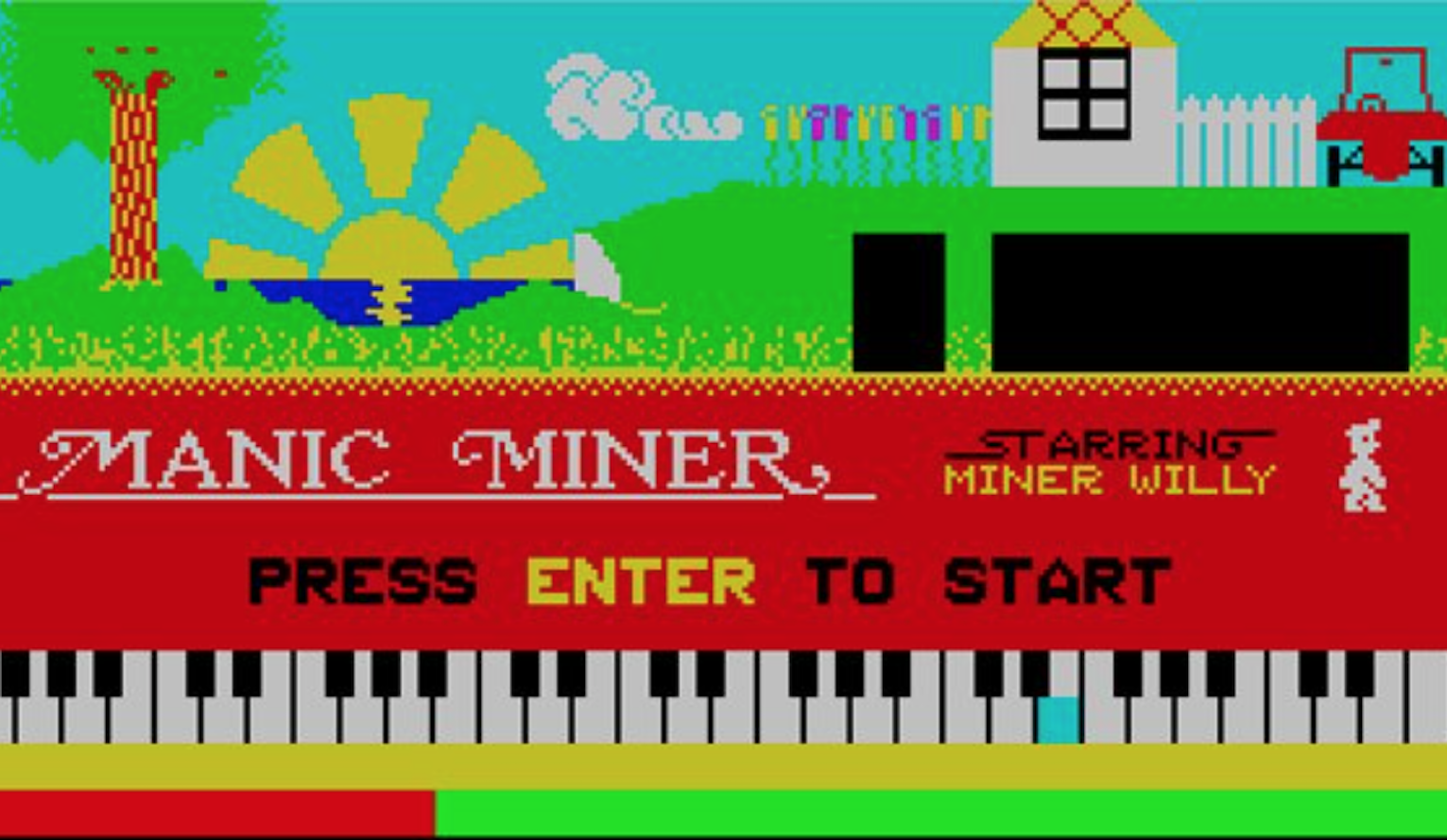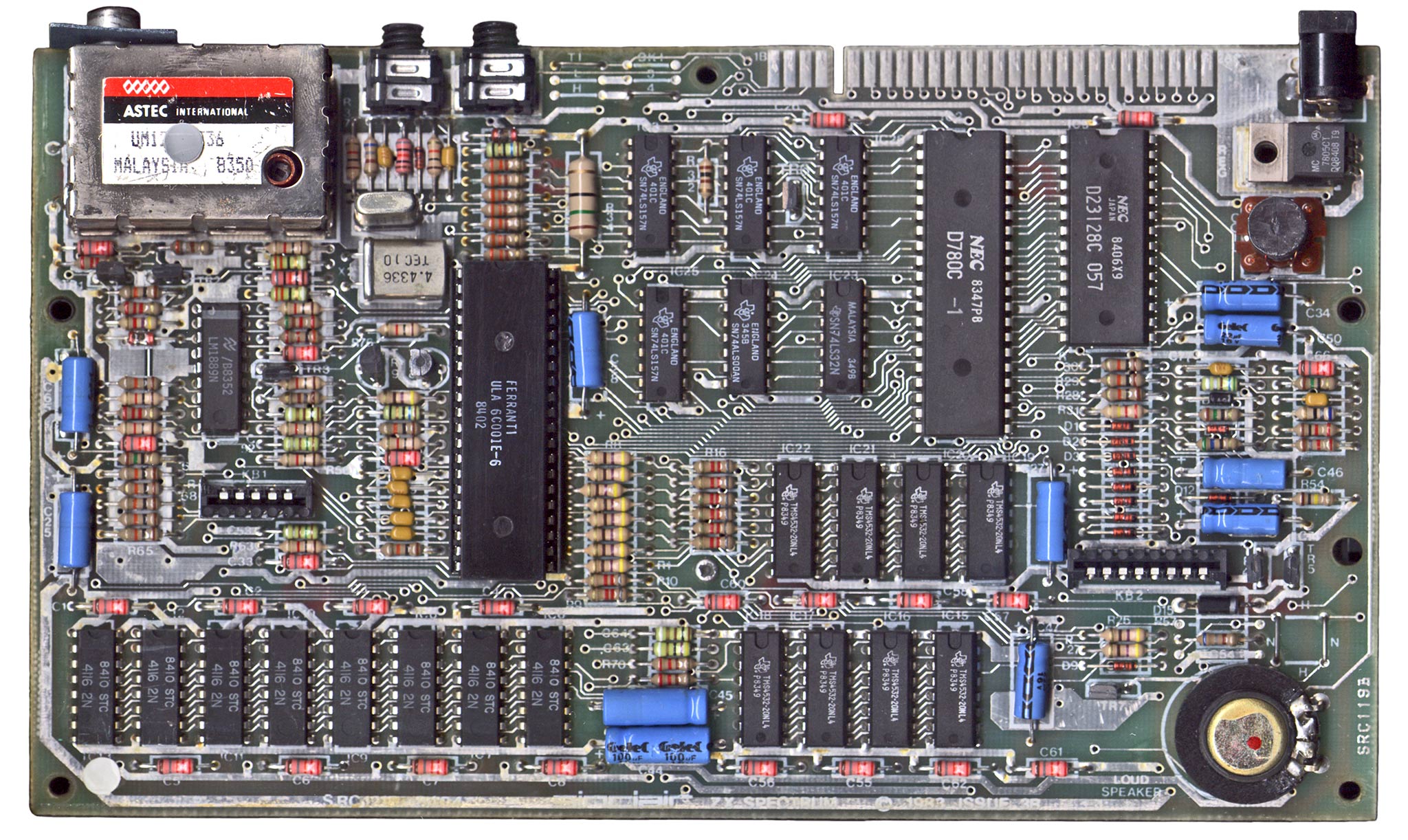Manic Miner (Key) Grieg

What connects Grieg and Iannis Xenakis with the beginnings of the UK computer games industry?
The ZX Spectrum was Britain’s first popular colour home computer. Launched by Sir Clive Sinclair in 1982 for an affordable £125, it quickly became a huge hit and went on to sell over 5 million units. When connected to a television it could display sixteen colours on the screen at the same time; a huge leap forward when compared to its monochrome predecessors.
The Spectrum quickly became a favourite with games enthusiasts. A whole generation of ‘bedroom coders’, teenagers who learned to program whilst living at home with their parents, became successful entrepreneurs by selling games for the new machine. These developers knew that, along with great graphics, for a game to be really engrossing it needs sound effects and ideally some music playing in the background.
And that’s where the Spectrum presented a problem. We’re familiar with Compact Discs having ’16 bits’ of resolution when sampling audio signals. Well the Spectrum had ‘one bit’ of resolution: a tiny 22mm “beeper” speaker, which provided just a single channel of 1-bit playback across a 10-octave range. Not a promising start for computer music.

Enter seventeen year old Matthew Smith. Smith was the archetypal teenage games programmer, writing code in his family home in Merseyside. His second game for the Spectrum, Manic Miner, written in just eight weeks, became a huge hit in 1983.
Manic Miner was a platform game where a small pixellated figure, complete with mining helmet, jumped around a series of underground caverns collecting valuable items. Infused with quirky humour, it quickly became a huge hit and one of the most popular early games for the Spectrum. Its star 'Miner Willy', was a more gritty British forerunner to the Italian / Japanese plumber 'Super Mario'.
Smith was ambitious to include some music with the game. What could be more appropriate for a game set underground than “In the Hall of the Mountain King’ from Grieg’s Peer Gynt Suite No. 1? So he set about overcoming the limitations of the audio hardware, and coded a rendition of few bars of Grieg’s piece. The music plays continuously through the game providing a soundtrack to the eponymous miner’s movements, greatly enhancing the game's addictiveness. This music also plays alongside the sound effects as 'Miner Willy' jumps about. So Smith achieved multi-channel sound from the single channel speaker.
So how did Smith do this? The technical background is explained in a fascinating recent article The Sound of 1-bit: Technical Constraint and Musical Creativity on the 48k Sinclair ZX Spectrum in the Italian journal Game. Interestingly, it owes something to a technique called granular synthesis which was pioneered by Greek composer Iannis Xenakis in the composition Analogique B.
Not content with the Grieg, Smith also included a few bars of Strauss’s The Blue Danube to accompany the opening screen of the game, with an on-screen keyboard complete with keys that were highlighted along with the music.
The Spectrum’s ‘Hall of the Mountain King’ isn’t going to win any awards but it did represent a milestone in home computer music and in using classical music in computer games.
Smith created an immediate follow up to Manic Miner, with the slightly more risqué Jet Set Willy, but then disappeared. The Guardian would later call him the JD Salinger of computer games.
We’ve included video of a full play through of the game below. Lots of ZX Spectrum emulators are also available so that the game and its music can still be enjoyed on your PC at home.
